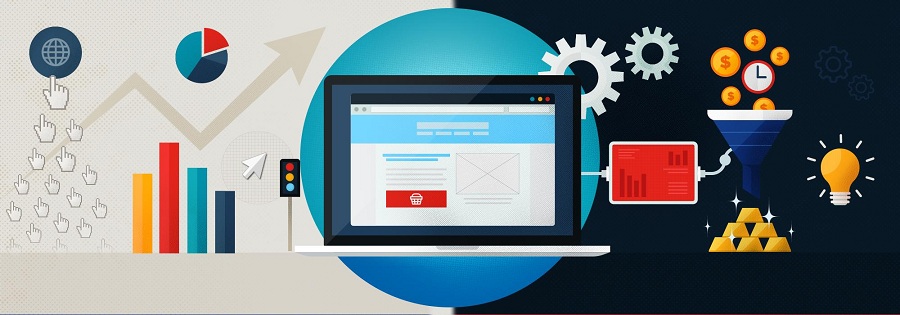
Conversion Rate Optimization – Understanding the Design Side
Are you looking forward to boost conversions on your site? Experts feel that design of a website can make all the difference. Listed below are the best and highly recommended web design principles that will boost your conversion rate:
- The Hick’s Law
It is very popular theory cited by a wide range of individuals for a variety of purposes. However, it is most commonly referenced in the field of web design. The law is named after William Edmund Hick, a British psychologist which states that the time taken for an individual for making a decision is directly proportionate to potential choices he/she has.
In short, an increase in number of choices will increase the decision making time.
According to a famous study by Mark Lepper and Sheena Iyengar (the psychologists), it is revealed that a display table with over twenty four varieties of jam attracted less interest as compared to those that displayed six varieties or less. To sum up, those subjected to larger display were only one-tenth to be expected to make a purchase as compared to those offered small display.
The above is an example of Hick’s Law in action which states that action is lost in proportion to number of choices offered. When it comes to web design, it is possible to boost conversions by restricting number of choices given to users. So cut back on the number of choices on website navigation bar. Too many links to choose from can make the user lose interest in them altogether. So avoid this.
Apart from the confusion relate to navigation link to press, users may also have issues deciding on scrolling page or using navigation bar, skimming headlines to choose blog posts to read, making choice between downloading lead magnet, sharing post on social media or leaving comments. Users may even get confused between buying a product, browsing for more, or going through product reviews.
And this is just the tip of iceberg. Users have to make a plethora of decisions and they may just get overwhelmed with these choices. So simply install a full-screen welcome gate on homepage. The gate covers the whole screen with one call to action which means user will see just one choice initially. For more choices, they require scrolling down.
- High Quality Images
Did you know low quality images can degrade the overall quality of your blog post or content? Experts believe that images are powerful enough to make or break a deal. Over 60% of consumers prefer search results that include images. In fact, most of these individuals are ready to get in touch with businesses that display images.
So strictly avoid making use of unresponsive stock photos or pictures irrelevant to the content. As per a research conducted by Skyword, it was revealed that content including compelling images get over 94 per cent more views!
Hence, you must focus on sourcing high quality pictures that develop positive links with the content and feel more personal. Try searching for free stock photography of very high quality and personal at Pexels, Unsplash, Death to Stock, Little Visuals, Kaboompics, Picjumbo, StockSnap, etc. For a detailed tutorial on integrating high quality pictures to your website, visit www.freelancewebdeveloper.net .
- Increase Familiarity with Faces
Human faces evoke a feeling of familiarity and togetherness. Users tend to get triggered automatically to a feeling or feel for that person when they see a face. Recognizable content on a website (an issue, a habit, a dilemma) makes one feel connected and understood. So it is always a good idea to incorporate faces into articles, testimonials, case studies and testimonials, landing pages, opt-in pages, etc. This is very important for enhancing possibilities of conversions. In case, you have a face of brand, get a professional photoshoot done.
- OptinMonster Full Screen Welcome Gate
The gate facilitates you to reduce distractions on homepage while preserving homepage functionality. Each page on your website must achieve one primary objective. Limiting user’s choices will make your website easier to use. Additionally, your conversions will shoot up.
- Color Matters
When it comes to web design, color often gets ignored. It would not be wrong to say that it is the most underrated aspect of design. However, experts believe that it is capable of playing a very crucial role in usability and conveying overall significance of a brand. It also highlights overall mood of a website. Varied color combinations evoke a number of reactions and emotions.
So when you choose a specific color scheme for site, go for a combination that evokes emotion you wish your brand to deliver. Curating Pinterest board with images reflecting your company’s vision is a great way of doing this. Thereafter, you can upload the images to Adobe’s Color Wheel. A color scheme is generated as soon as the image uploads. Using contrast is important to ensure that all call to action buttons, headlines, text, are readable and noticeable. This means font color and button color needs to be in high contrast with background.



















